With a company history that dates back to Nelsonville, Ohio in 1932 — where they are still headquartered — Rocky Boots clearly knows a thing or many about making tough, cutting-edge footwear and accessories for the outdoors, job site, western apparel, public safety, and military users.
Recently, Rocky sent me a pair of their new Mountain Combat boots to evaluate. The experience was indeed positive. The Mountain Combat is a coyote tan leather and composite performance boot designed for outdoor pursuits in rough terrain. This boot comes in a 6” and 8” height and either standard or waterproof. I had a choice from Rocky, and I opted for the 6” or chukka-style shoe, non-waterproof. Its $156.00 MSRP places it between an entry-level boot and pricier options.
On Good Footing
Out of the box, I noticed the pair had even stitching and precisely glued seams. The Rockys ran true to size for me and were very comfortable as delivered and required little break-in period. I developed no hot spots on either the foot or ankle from the design. So far, so good.
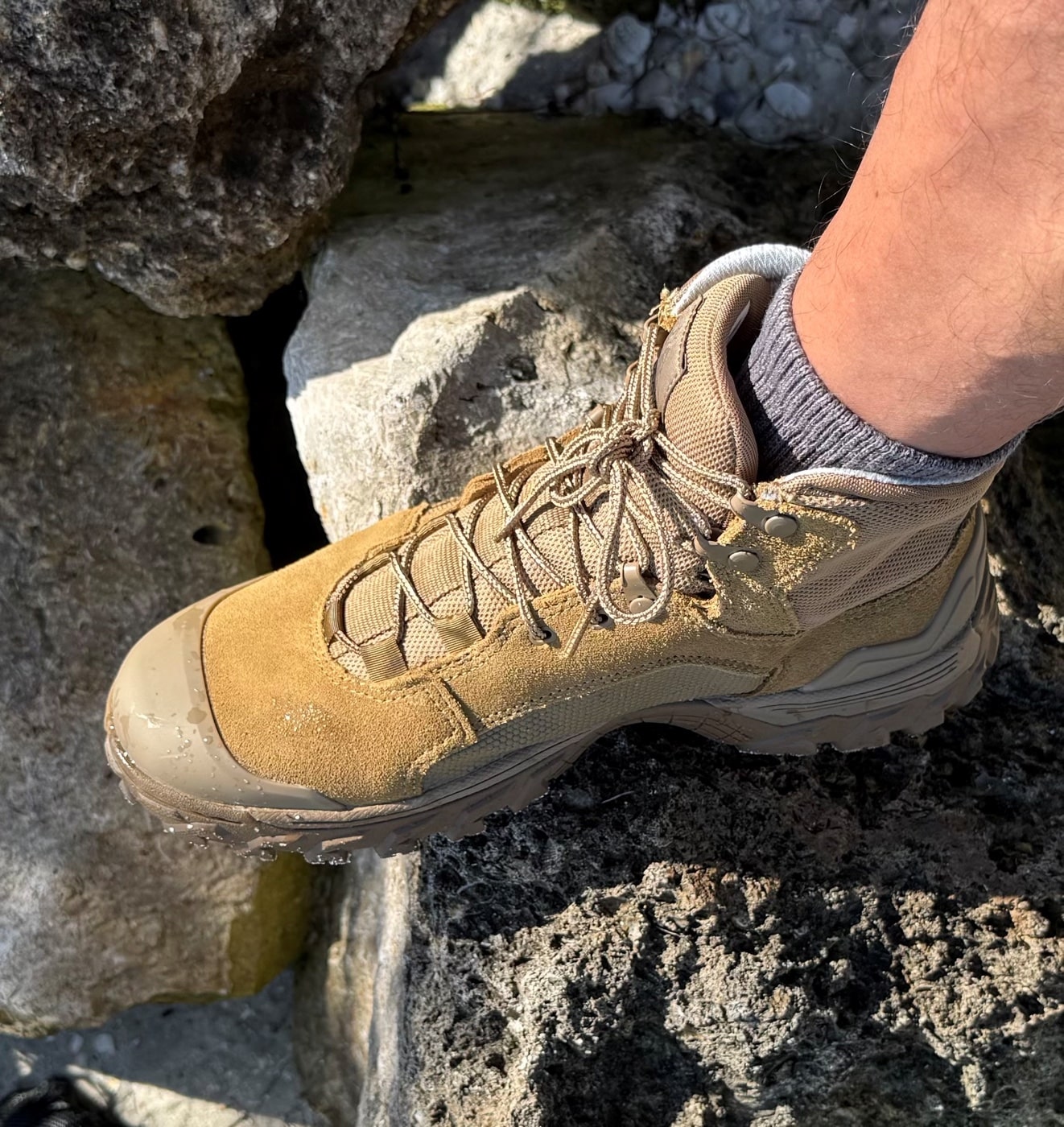
For the outsole, the Mountain Combat is what Rocky calls “multi-directional.” The lug pattern is variable, like on an off-road tire for good grip on uneven surfaces, mud, snow, shale or sand. The outsoles are oil and slip-resistant and a quick step on some Mobile 1 on my garage floor confirmed this. Then, I had to clean up the mess.

I marched the boots through the sand to one of my favorite causeways. Clambering across the jagged rocks was no problem, and the lugs on the soles held fast to the wet algae. The shank of the Mountain Combat is fiberglass. It provided proper, stiff support for the sole and made the boot feel stable. Some boot brands do not have these hardened soles, and you will notice it on sketchy terrain when the floor of your boot flexes. Not here.
Rocky Mountain Combat Boots Details
TPU is a thermoplastic polyurethane that comprises the toe cap of the boot. It is not a safety cap, but it will fend off light strikes that may befall your phalanges (or piggies). The TPU cap is placed for durability where we all know our footwear takes hard kicks, and this is a welcome feature. Both the toe cap and a heel protector are sewn into the outsole.
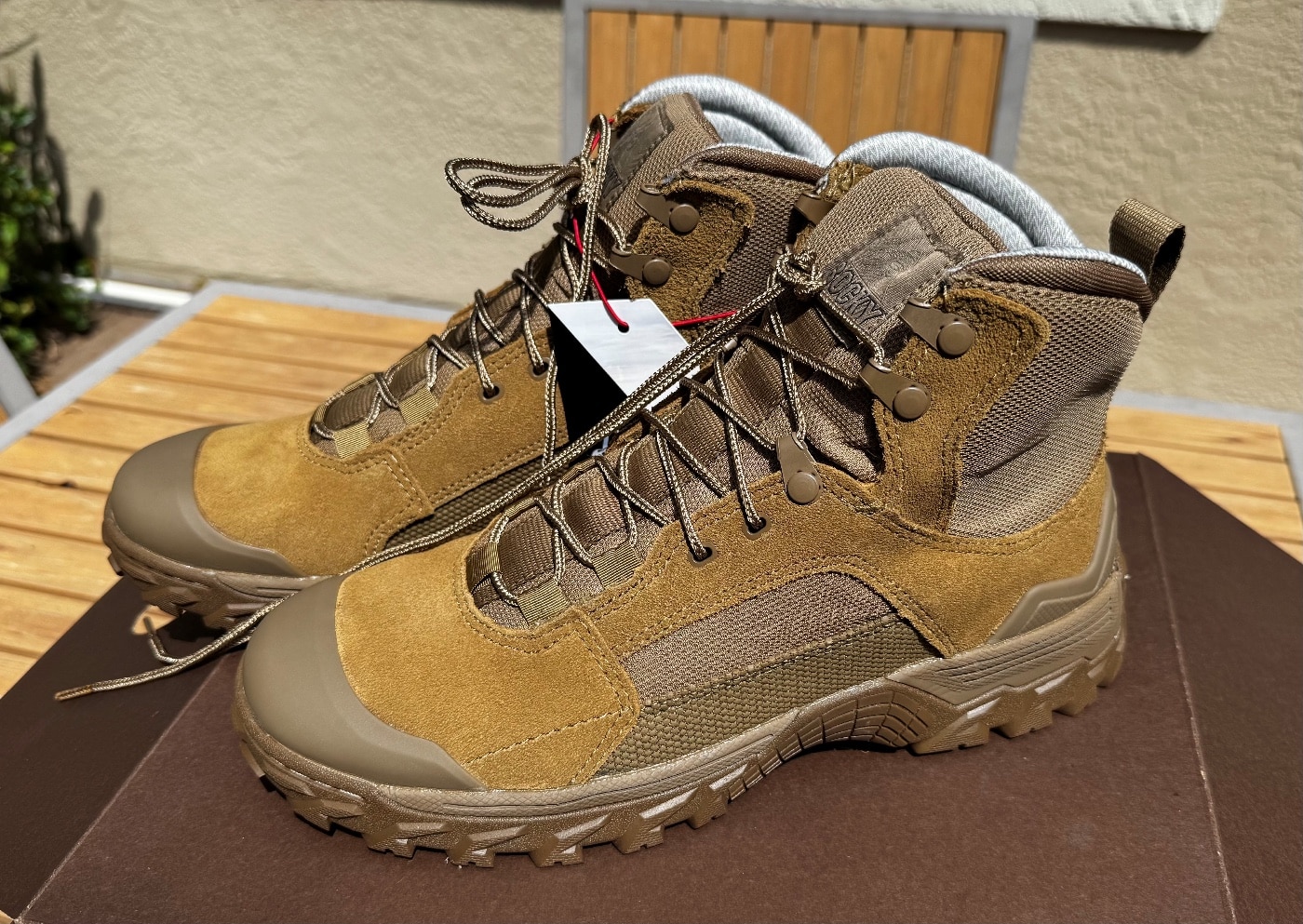
The inside of the boot fabric is lined with Külkōte, a thermo-regulating textile coating whose technological explanation is beyond my ken. However, suffice it to say that it results in a cooling effect. Rocky Boots is one of the few companies that have a certification for applying Külkōte, which is based in Park City, Utah. Totally not supported by science, but the inside of the Rocky’s felt cooler to the touch than another pair of similar low-top boots.

As an added feature, the removable insoles of the Mountain Combat have a black and white patterned topside and a fuchsia bottom. The bright mixture of pink and blue makes a stand-out hue that can be used for signaling in an emergency. I imagine it would be eye-catching for a rescuer since it is not the usual orange or yellow. I could not find a reference to this function for fuchsia. Maybe one of you knows the answer and will pipe in on the comments section. Of this, I am curious.
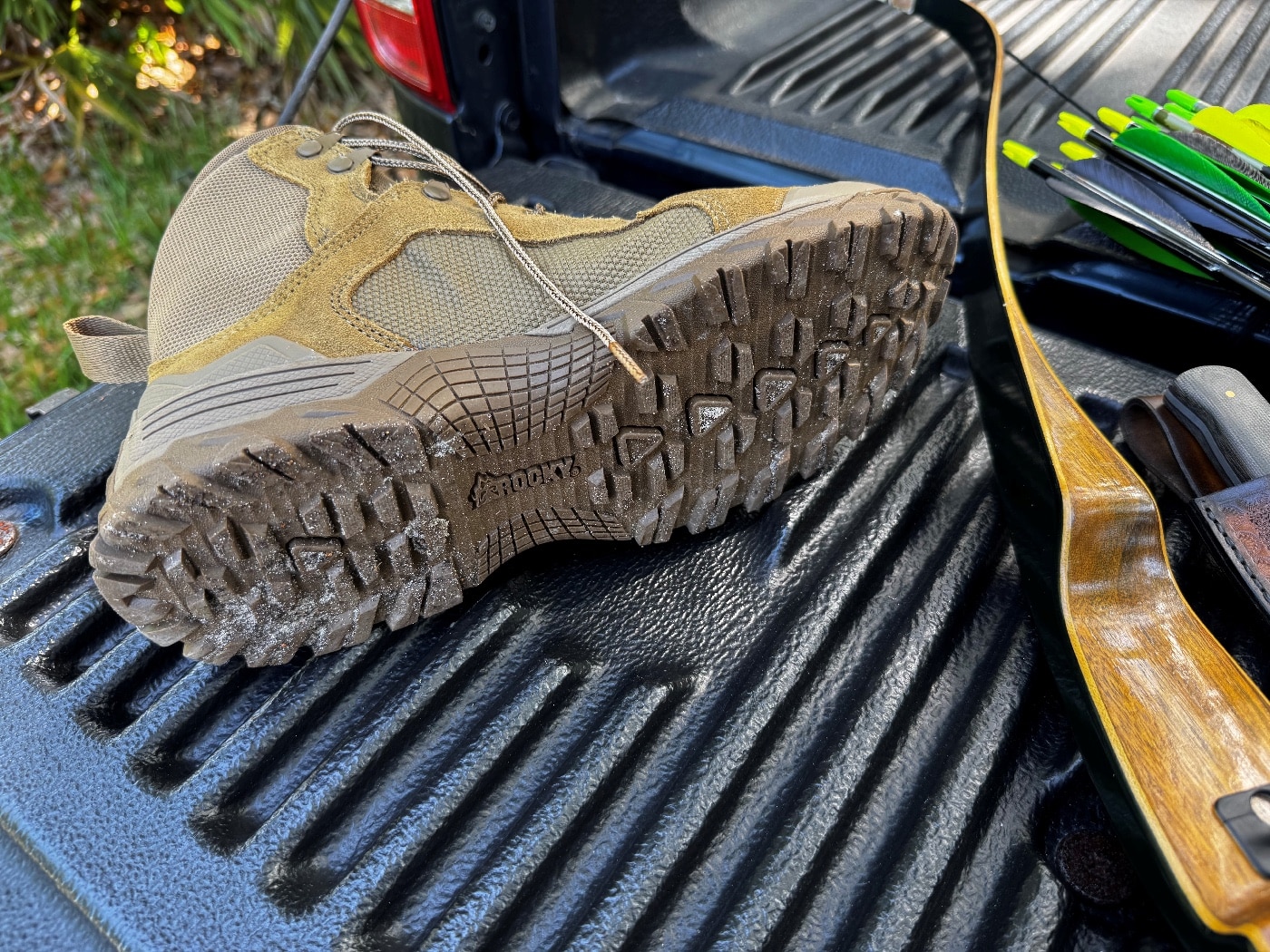
The upper of the Rocky boot is a flesh-out, full-grain leather. The tongue and collar of the upper are a nylon-type fabric. At the instep and outstep are panels of SuperFabric. SuperFabric was developed in 1996 by Dr. Young Hwa-Kim, who was working toward a new material to prevent needle sticks in medical gloves. This is where it gets fascinating.
The good doctor and his company, Higher Dimension Materials, Inc., created a proprietary technique for mechanically fusing a flexible grid of tiny hard epoxy plates to a cloth. It’s not a surface treatment, but a bonding process. This results in a hardened textile that is durable, water-repellant, air-breathing, and scuff, slash and stain resistant. This material is used by Land Rover, Ferrari, Dive Rite products and Black Yak mountaineering gear, among many other manufacturers.
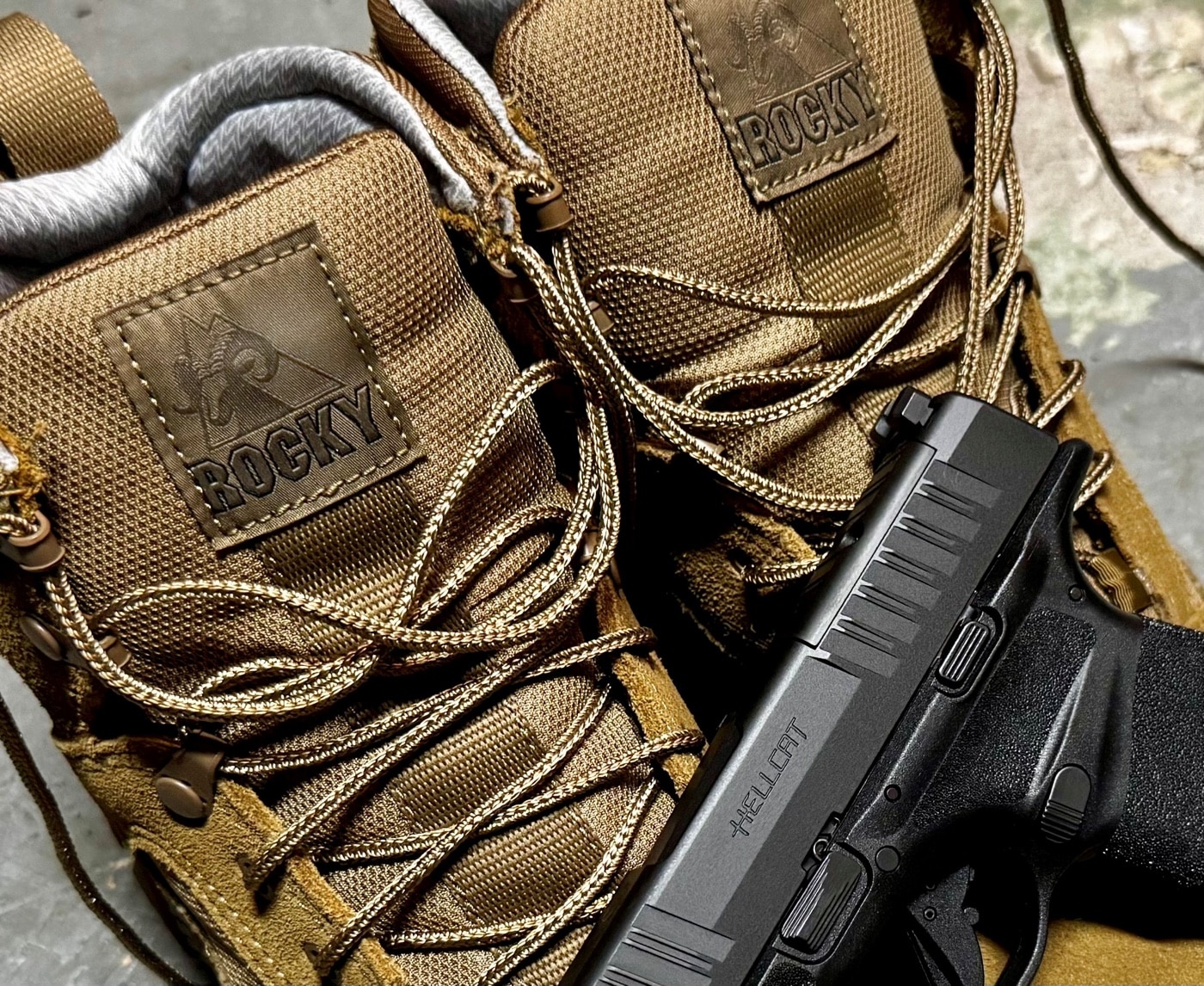
Rocky incorporates SuperFabric into the in- and outsteps at mid-boot to prevent rope burn and wear if you are climbing, rappelling or fast-roping. It’s an added touch in the Mountain Combat that adds a sort of “armor” to this part of the shoe. Some other features of the boot are metal eyelets on the upper 2/3rd of chukka, and mil-spec laces with heat-fused aglets.
Conclusion
The Mountain Combat 6” boot is a comfortable chukka that looks good with jeans or BDU pants. I have been mostly wearing them in the garage while making knives and sheaths, or in the field shooting my recurve bows. They will also likely go on a hike in Utah in the coming months.
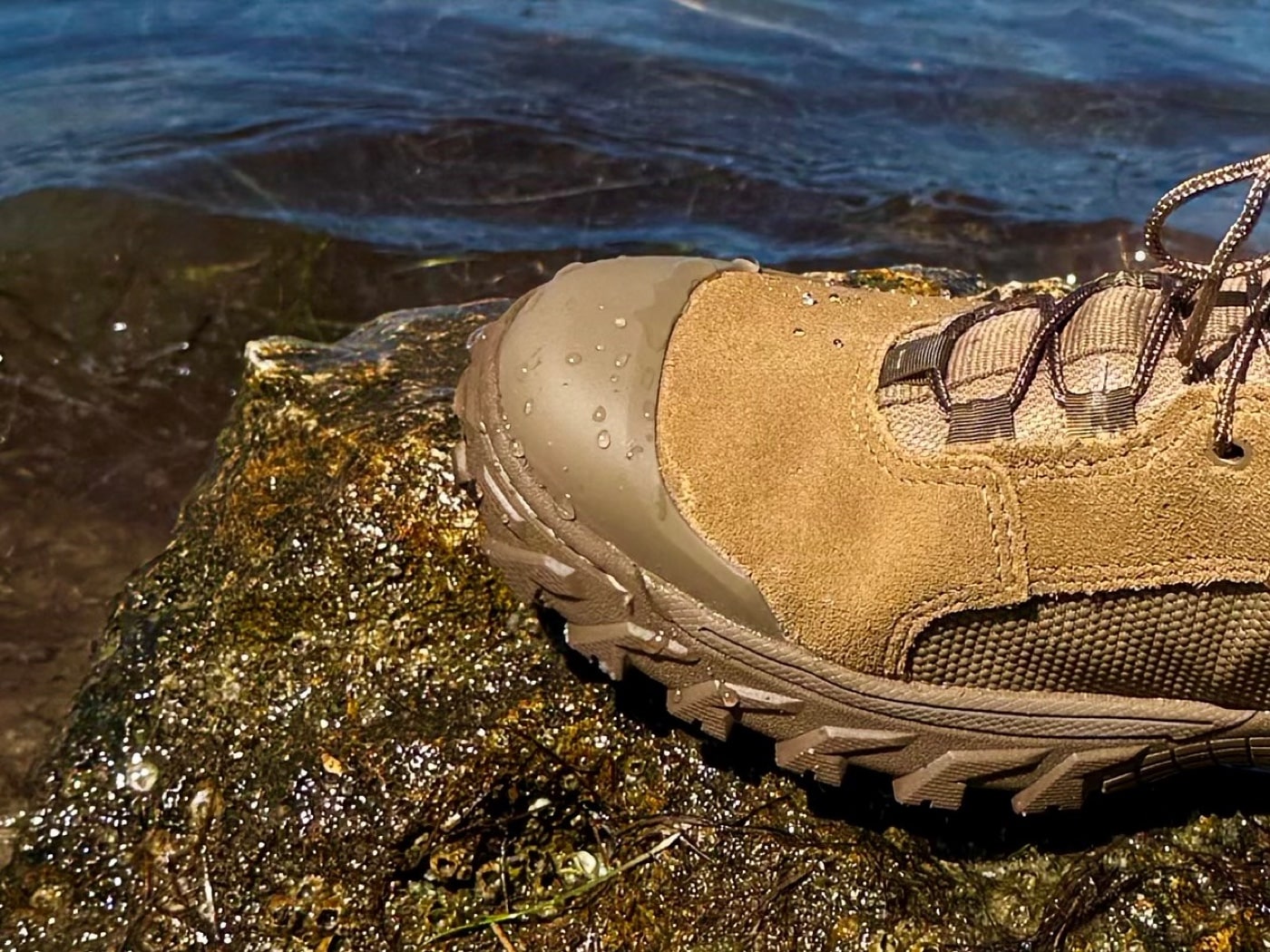
When researching the Mountain Combat, I was intrigued by the advanced technology that the Rocky staff used in their choices of specialty materials and their implementation on the actual boots. Remember, this is a mid-level boot with an MSRP of just $151, not the truly expensive stuff. This is a lot of boot for the money.
I appreciate that Rocky Boots were thoughtful in their design. It shows why the company has been innovating for nearly 100 years.
Editor’s Note: Please be sure to check out The Armory Life Forum, where you can comment about our daily articles, as well as just talk guns and gear. Click the “Go To Forum Thread” link below to jump in and discuss this article and much more!
Join the Discussion
Featured in this article
Read the full article here






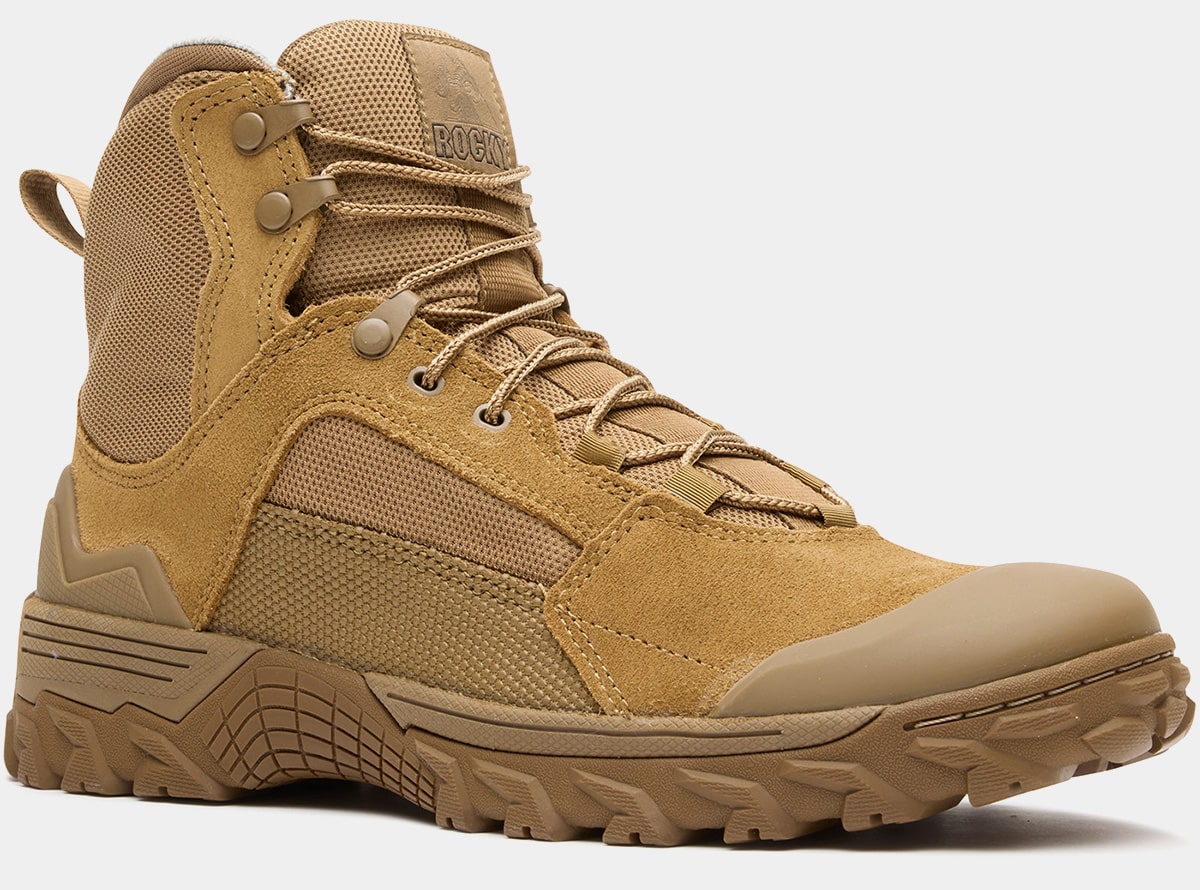

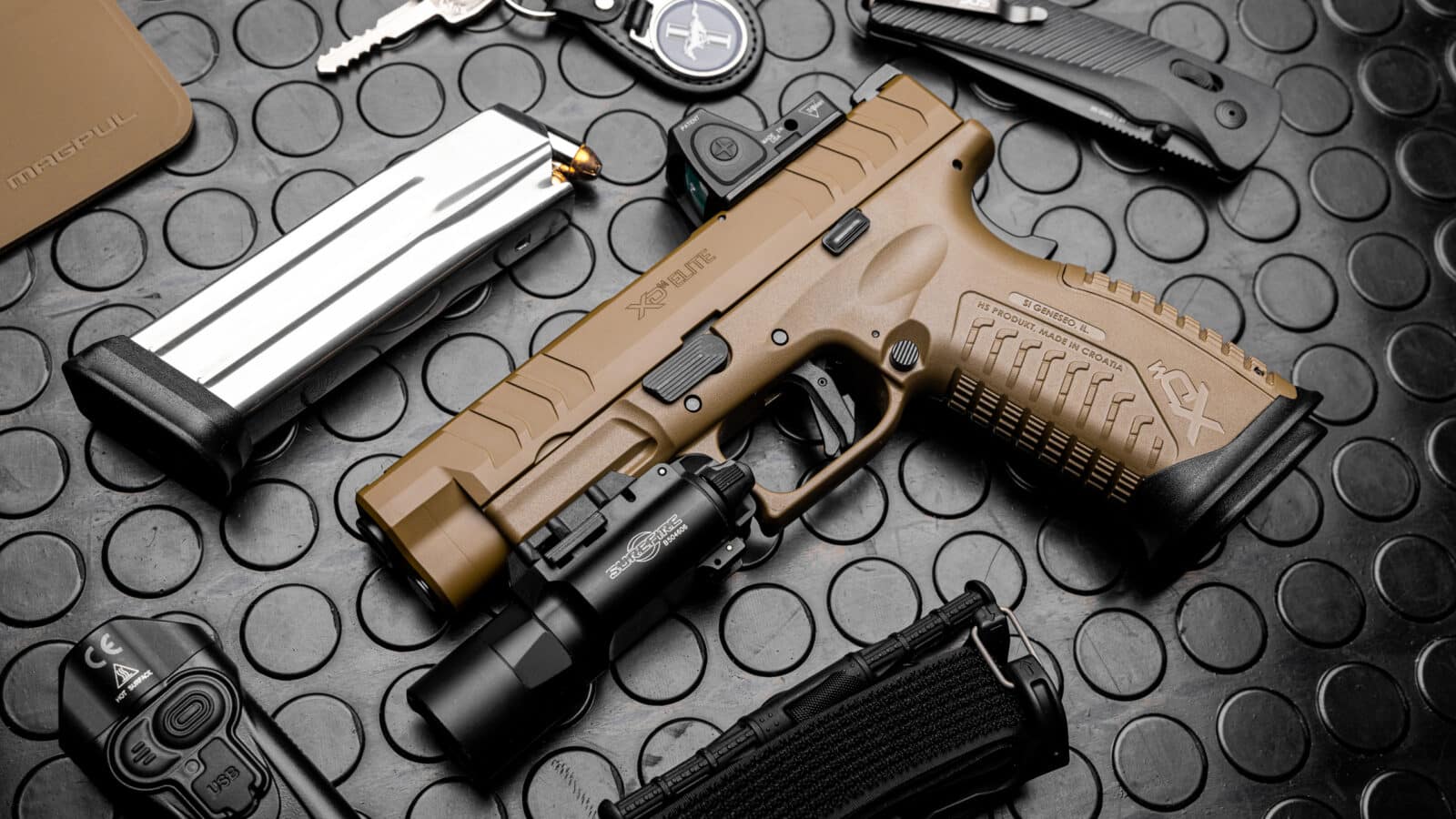









Leave a Reply